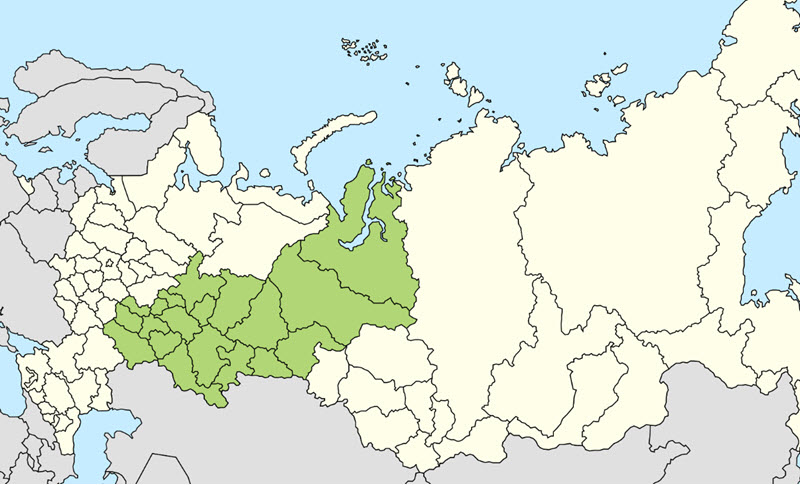The Volga Tatars are an ethnic group native to the Volga-Ural region. They are a subgroup of the Tatar main group, and this subgroup does in turn consist of various smaller groups, such as the Kazan Tatars, Qasím Tatars, Noqrat Tatars, Mishars, Perm (Ostyak) Tatars, and Keräşens.
Volga Tatars constitute one of the largest ethnic groups in the Russian Federation. In Tatarstan, which is a part of the federation, they comprise more than half of the population, and in Bashkortostan, another part of the federation, roughly 25% of the population are Volga Tatars.

Volga Tatars in the Russian Federation
Traditionally, the Volga Tatars have been Sunni Muslims and spoken the Tatar language. Today, many of the also speak Russian, if they reside within the Russian Federation. Outside Tatarstan (which is a part of the federation), it is common for urban Volga Tatars living in the federation to have Russian as their first language. This is for instance generally true for the Volga Tatars in Moscow, Saint-Petersburg, Nizhniy Novgorod, and Ufa.
There are approximately 6.2 million Volga Tatars in the world, but the figure will of course vary depending on how you define Volga Tatar. In the Russian Federation census of 2010, the number of people identifed as Volga Tatars were 5,310,649. Of these, more than 2 million lived in Tatarstan, over 1 million in Bashkortostan, and nearly 150,000 in Moscow. As early as the 17th century, Volga Tatars were present in Moscow, both as tradesmen and as feudals in state service.
Volga Tatars began moving to Ural and Upper Kama as early as the 15th century, and to West Siberia in the 16th century. One wave of migration into West Siberia was prompted by the Russian conquest of the Khanate of Kazan, and another one by railway projects and industrialization during the first half of the 20th century. In the 1970s, Volga Tatars moved to West Siberia to work in the oil fields.
Farming Volga Tatars were resettled in East Siberia in the 19th century, followed by a second-wave of Volga Tatar migration into the region in the 1910s when the railroad projects needed workers. In the 1930s, many Soviet subjects, including Volga Tatars, were exiled to East Siberia after falling out of favor with the authorities.
Population figures from the 1910s show that at this point, there were about half a million Volga Tatars living in the Kazan area. (Kazan is the largest city in Tatarstan.) This number was greatly reduced during the 1921-1922 famine in Tatarstan, which killed a large number of Tatars, including Volga Tatars. After the famine, the Soviet authorities repopulated Tatarstan with ethnic Russians, thus reducing the Tatar percentage of the population there.
Volga Tatars outside the Russian Federation
Examples of countries with notable Volga Tatar populations:
| Uzebekistan | Over 465,000
Many Volga Tatars emigrated to Cental Asia in the 19th and 20th century, to places that we today know as Uzbekistan, Turkmenistan, Tajikistan, Kyrgyzstan, etc. In the 19th century, they were typically part of the Russian army or tradesmen. Some migrated for religious reasons. In the 1920s and 1930s, the industrialization process in Central Asia attracted job seekers. In the 1960s, some migrated as a part of aid programs to help areas damaged by earthquakes. |
| Kazakhstan | Over 200,000 (1 January 2012)
Volga Tatars have been living in Kazakhstan since at least the 1700s and arrived there in several waves of migration. In the 18th and 19th century, many of them came as a part of the Russian army. In the 1930s, it was the budding industrialization of the region that drew job seekers in, including Volga Tatars. From the 1950s, formerly non-farmed lands were made available for migrant farmers. |
| Ukraine | Over 73,000 (2001 census) |
| Turkmenistan | Over 35,000 (in 1995)
See Uzbekistan entry for more information. |
| Kyrgyzstan | Over 28,000
See Uzbekistan entry for more information. |
| Azerbaijan | Circa 26,000
Azerbaijan and certain other parts of Caucasus attracted Volga Tatars to the oil fields from the 1890s and onward. The Volga Tatars have also historically been selling bread here. |
| Turkey | Circa 25,500 |
| China | Circa 5,000
In the 1910s, Volga Tatars were recruited to work with railway construction projects in northern China. |
| Lithuania | Circa 4,000
After 1944/1945, builders and Soviet military personnel arrived, and some of them were Volga Tatars. |
| Estonia | Circa 2,000
After 1944/1945, builders and Soviet military personnel arrived, and some of them were Volga Tatars. |
| Finland | Circa 900
The Volga Tatars in Finland are mostly the descendants of Mişärs who arrived in the 19th century. |
A less well-known Volga Tatar migration was the one to Brazil in the 1800s. After the end of the colonial era in Brazil, the country activelly worked to convince European migrants to migrate, and they were quite successful within some Volga Tatar populations. Just like the Slavs who migrated to Brazil, the Volga Tatars chiefly settled in Paraná and Rio Grande do Sul.